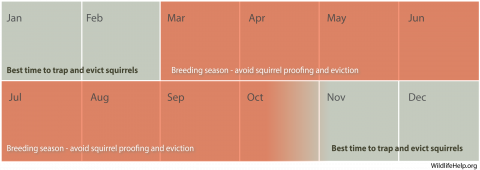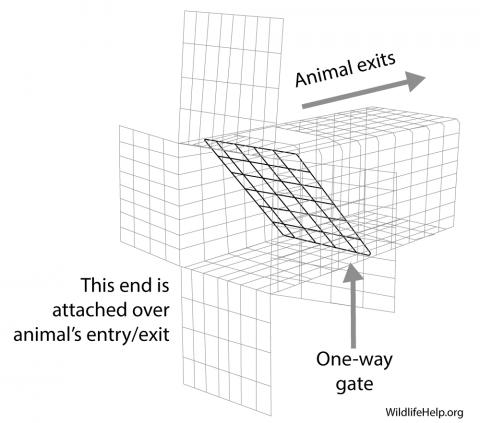One-way door excluders can also be used to remove squirrels from homes and are very effective in removing flying squirrels. Commercial excluders sized for small flying squirrels, (3-inches x 3-inches x 10- to 20-inches with ½-inch x 1-inch mesh), medium sized gray squirrels (5-inches x 5-inches x 12- to 20-inches with ½-inch x 1-inch mesh), and larger sizes for fox squirrels and other animals are available. They are designed to be installed over an entry hole. Their internal spring-loaded door only opens outward allowing the squirrel to exit but not re-enter.
You can make your own squirrel excluder by mounting an 18-inch section of 4-inch plastic pipe over an opening. The pipe should point down at a 45-degree angle.
A one-way door can also be used over an opening to let squirrels out and prevent them from returning.
Once the squirrels are out, close openings, cracks, and other entrances to structures being used by squirrels with heavy-gauge ½-inch wire mesh or aluminum flashing.
Before closing openings to attics and other parts of buildings, make sure there are no squirrels inside. Confirm absence by placing a soft plug of wadded up newspaper in the hole or tape plastic over the opening and check if breached in 24-48 hours. After the openings are closed, place live traps in the house as a precaution. Wire cage traps and box traps at least 9” x 9” x 24” will allow you to live trap squirrels for release outside. Bait traps with apple slices, cracked nuts, or peanut butter. Check traps twice daily.
During breeding seasons, give suspected breeding females time to remove pups and relocate them away from the house. Evicted squirrels may cause further damage chewing holes to re-enter, especially if a female whose pups were left behind.





